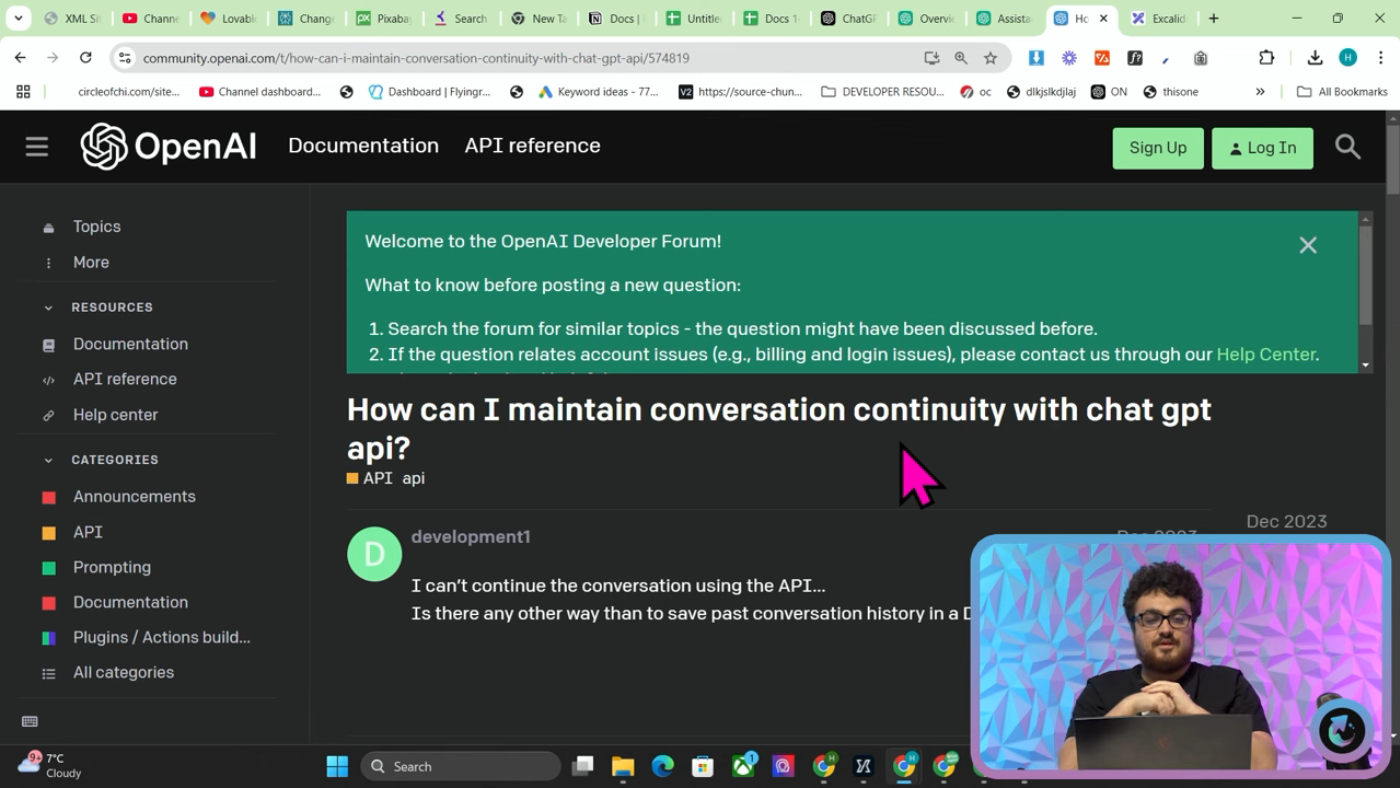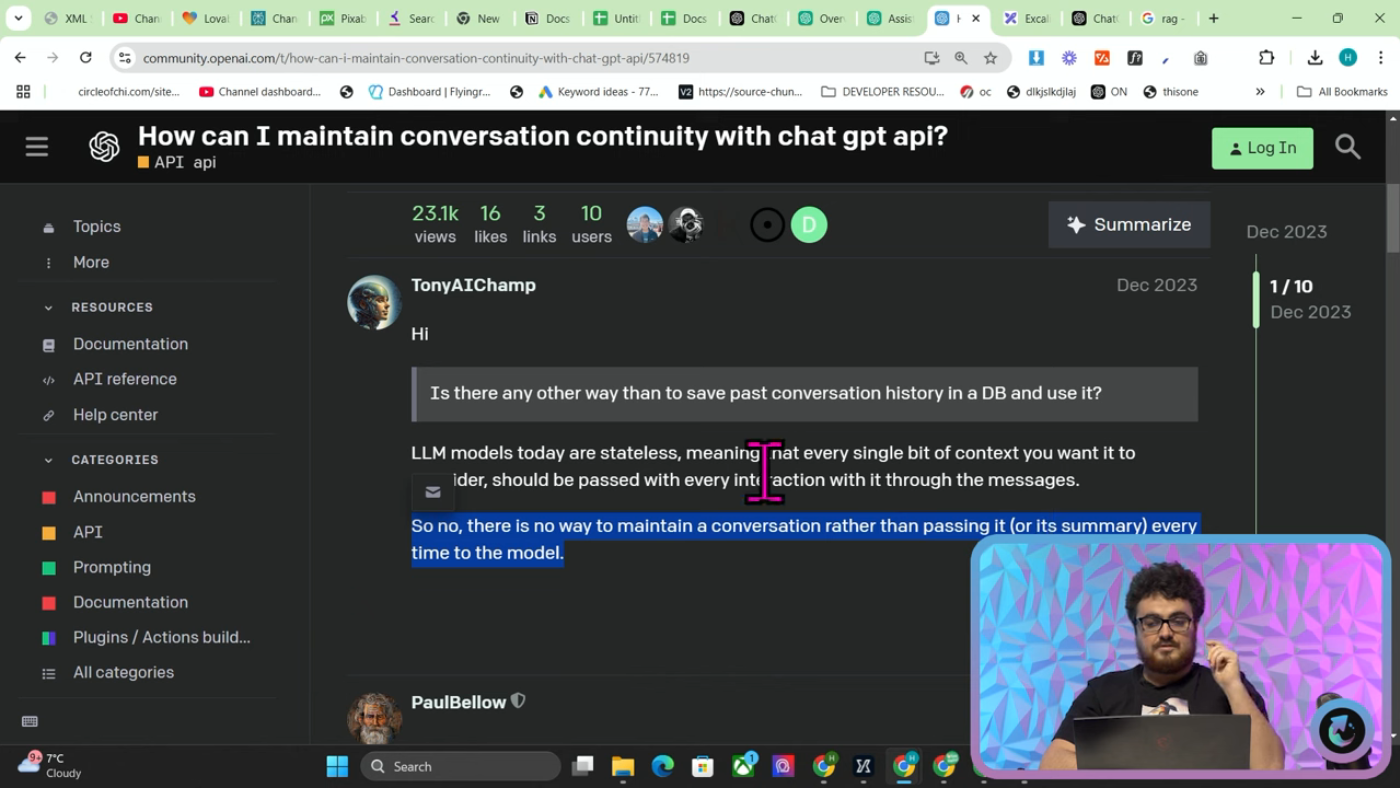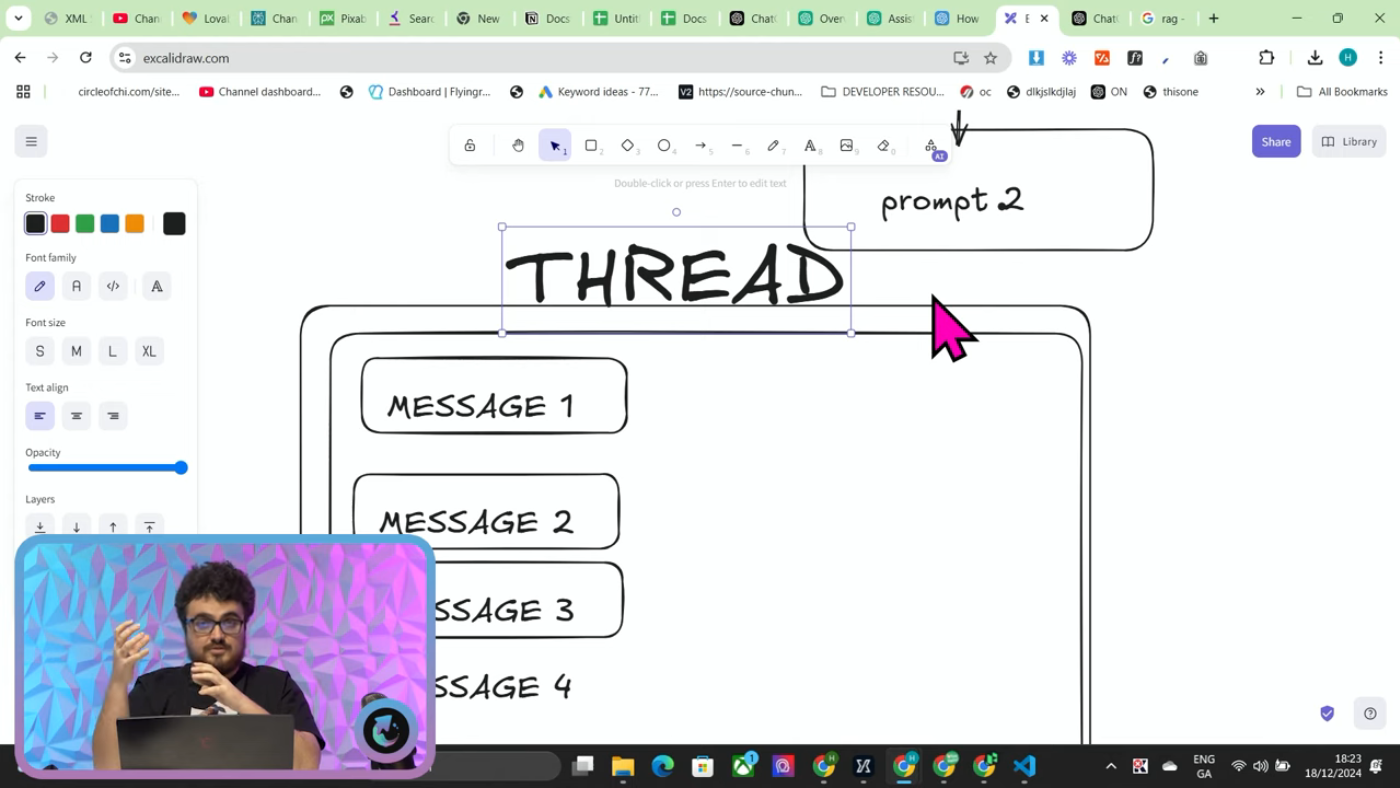Introduction to the Assistant API
The Assistant API is a game-changer for developers who want to create continuous, context-rich conversations with large language models (LLMs) like ChatGPT. Unlike traditional methods that require passing previous responses as inputs, the Assistant API allows for an ongoing thread of dialogue, automatically handling truncation and context retention without relying on retrieval augmentation (RAG) or cumbersome prompt chaining techniques.
What is the Assistant API?
The Assistant API is a tool that enables developers to have a continuous conversation with LLMs within a thread of conversations. All the context is automatically remembered without using RAG or passing on each prompt's output one by one. This API is a more "human" style of conversation with LLMs, preserving context without manual prompt chaining.
 Introduction to the Assistant API
Introduction to the Assistant API
Limitations of Traditional Prompting
Traditional prompting methods have limitations. LLM models today are stateless, meaning that every single bit of context you want to consider should be passed with every interaction. This can be done in two ways: using RAG (retrieval augmentation) or feeding the output of one prompt to another prompt.
 Limitations of Traditional Prompting
Limitations of Traditional Prompting
How the Assistant API's Threads Work
The Assistant API introduces the concept of threads, which are conversation sessions between an assistant and a user. Threads store messages and automatically handle truncation to fit content into models. This means that the conversation that you have with ChatGPT is basically all within a box, and each message can be thought of as a message in a thread.
 How the Assistant API's Threads Work
How the Assistant API's Threads Work
Automatic Context and Truncation
The Assistant API automatically handles context and truncation. Even if you have 50 messages in a thread, all of them would automatically have all the context, including the fact that each model has a certain input or output token limit. The API gives you the possibility to have a thread ID, which you can refer to at any time and any message inside that thread is inside that thread.
 Automatic Context and Truncation
Automatic Context and Truncation
Potential Use Cases and Applications
The Assistant API has many potential use cases and applications. It can be used to create complicated applications that could do things like create web pages, landing pages, and more. With the Assistant API, you can really start to build complicated applications that could do something like create web pages using AI.
 Potential Use Cases and Applications
Potential Use Cases and Applications
Conclusion
In conclusion, the Assistant API is a powerful tool for developers who want to create continuous, context-rich conversations with LLMs. It introduces the concept of threads, which store messages and automatically handle truncation. The API has many potential use cases and applications, including creating complicated applications that could do things like create web pages using AI.

